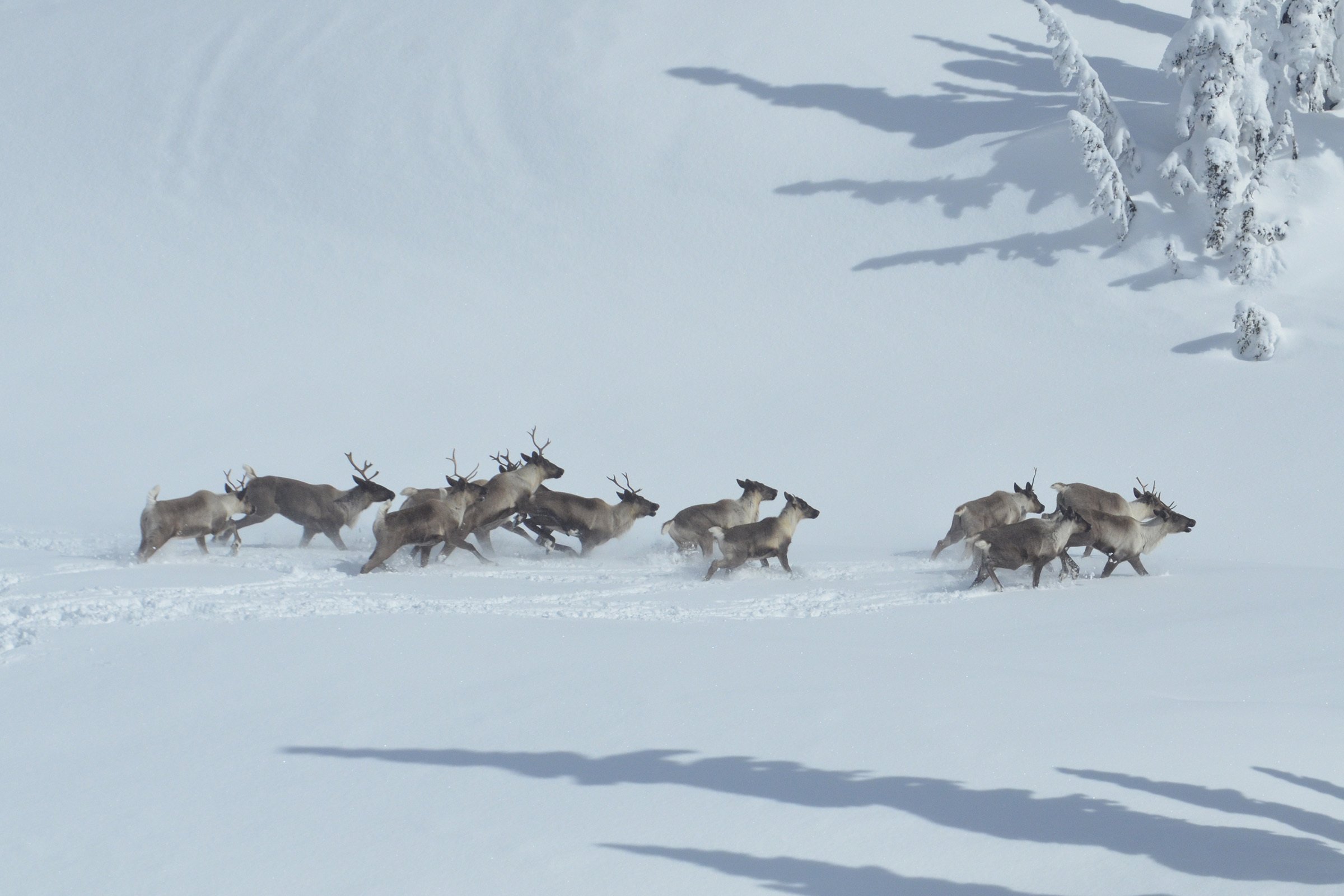Populations of the endangered woodland caribou are in decline, and the ABMI’s Caribou Monitoring Unit (CMU) at the University of Alberta is part of collaborative efforts to understand the problem and find sustainable solutions. New research—led by CMU manager Dr. Rob Serrouya, supported by Dr. Stan Boutin of the U of A / ABMI, and published today in the journal PeerJ—suggests that reducing invasive moose populations may slow the decline of woodland caribou.
Invasive moose? You might not think of them as an invasive species, but moose and some other ungulates have exploded recently over much of the woodland caribou’s BC and Idaho range (logging and a warming climate are the most likely culprits). By themselves, woodland caribou populations are too small to warrant much attention from predatory wolves. But add in large populations of other prey species, such as moose, and you have a recipe for a booming wolf population. Lots of wolves mean more predation on woodland caribou, leading to their decline. In other words, increasing populations of moose are hastening the decline of woodland caribou by increasing the number of predatory wolves.
One way to slow the decline of woodland caribou is to remove wolves from the area. This is a controversial idea, and it doesn’t really get at the root of the problem—moose and deer populations might well continue increasing, eventually attracting even more wolves. Another approach is to reduce logging; this is already taking place, but it will take decades for trees to regrow. Still another approach might be to reduce the population of prey species in the area, like moose, which should eventually also result in fewer wolves and thus less predation on caribou. Given that moose are an invasive species, the third approach might be easier to justify both ecologically and politically, and it digs a little deeper into the direct causes of caribou decline. This is what Serrouya and his team tested.
The researchers took advantage of changing government policies in BC to perform an experiment that compared caribou populations in two large regions. In one region, new regulations allowed increased sport hunting of moose. In the second ‘control’ region, it was business as usual, with no additional hunting. How would caribou populations respond in each region?
Over several years, caribou populations in the control region continued to decline at about the same rate as ever, and moose and wolf populations remained high. By contrast, in the area with increased moose hunting, moose populations dropped by a surprising 70%, wolves left the area at a rate 2.5 times that of the control region, and, lo and behold, caribou survival rates increased by more than 10%—enough that the caribou population stabilized. These survival figures are similar to those from an Alberta study that removed 841 wolves from the Little Smoky caribou herd over 7 years, suggesting that the less controversial practice of reducing invasive prey species can be a useful tool on the road to caribou recovery.
Going forward, the challenge will be that recovery demands more than just population stability. Recovery requires positive population growth, and achieving that will likely mean the simultaneous use of various management approaches, from habitat protection to the reduction of invaders such as moose—maybe even the removal of wolves in some cases. The story continues: more research will help, and the CMU will continue to work with its many collaborators to find a long-term solution.
—
Full article citation: Serrouya, R, B.R. McLellan, H. van Oort, G. Mowat, and S. Boutin. 2017. Experimental moose reduction lowers wolf density and stops decline of endangered caribou. DOI 10.7717/peerj.3736



